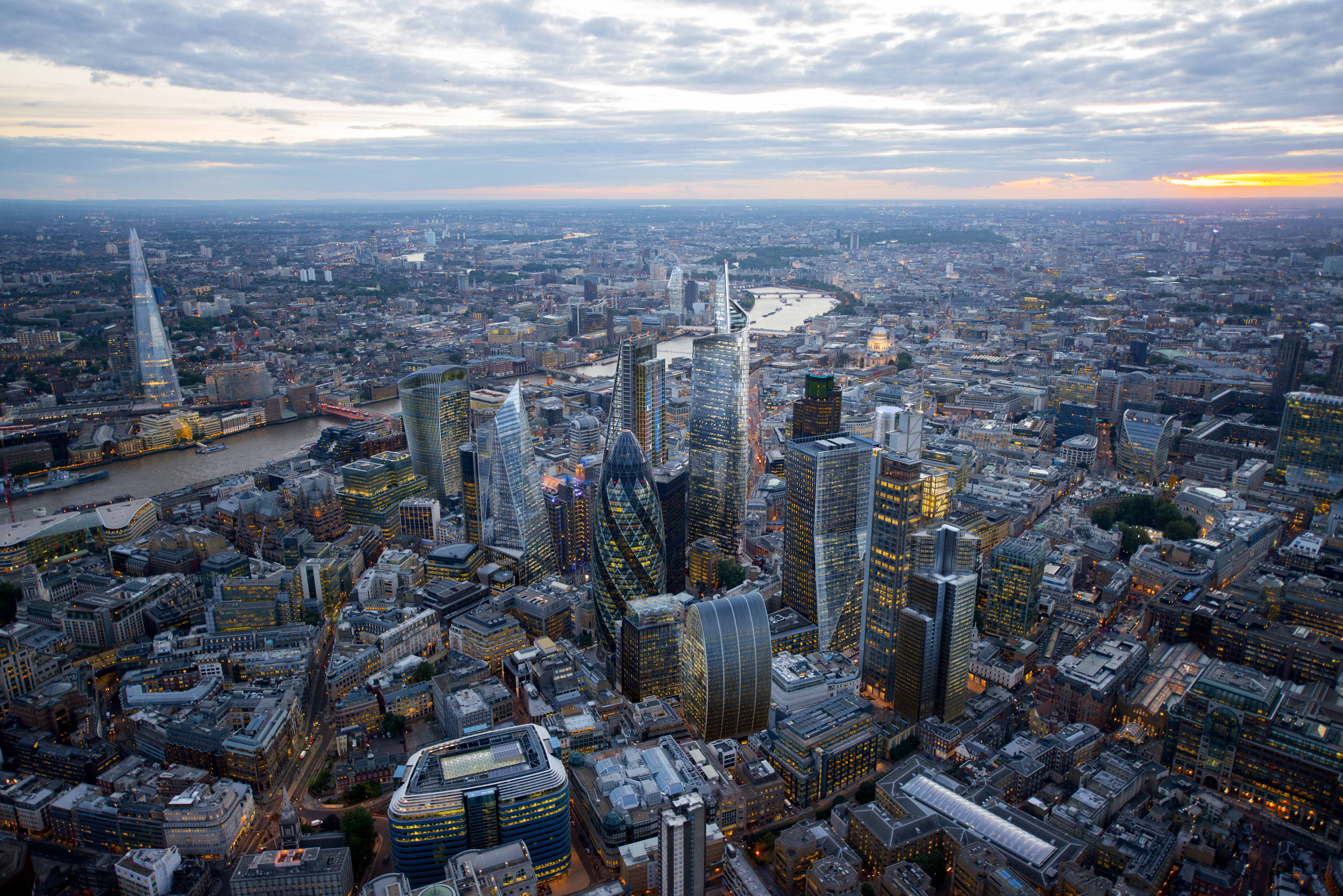The think tank New London Architecture (NLA) has released the results of an independent survey to uncover the number of towers planned for the capital and how this will affect the people who live and work in the city.
As part of a major NLA Insight Study into the past, present, and future of tall towers in the capital and NLA exhibition London’s Growing Up!, which opens next month, the survey by GL Hearn has found at least 236 tall buildings over 20 storys are currently proposed, approved, or under construction in London, and set to dramatically alter the capital’s skyline. Initial estimates had originally placed the figure at 200.
This new trend for tall buildings will see 33 buildings between 40 and 49 storys and 22 buildings of 50 storys or more planned for London.
About half (48%) of the 236 towers have been approved and 19% are already off the starting blocks and under construction.
High-rise living sees the biggest surge, with 80% of the towers planned as new residential blocks for the capital—a total of 189 new towers, potentially contributing to tackling London’s housing crisis.
Tower Hamlets, traditionally one of London’s less affluent boroughs, is at the heart of the building boom as the biggest area of development, with 23% of the projects being planned there alone.
Central and East London are the focus areas for the most future developments, with 77% of the total planned tall buildings. Tower Hamlets, Lambeth, Greenwich, Newham, and Southwark have a combined total of 140 new towers, out of the proposed 236.
Of the remaining towers, 18 are set to be office developments, eight hotels, 13 mixed-use, and one tower is earmarked as an educational institute.
The results of GL Hearn’s building survey will inform the NLA Insight Study which investigates the past, present, and future London skyline.
Status of tall building development projects
113 (48%) of development projects approved
72 (30%) proposed applications
45 (19%) under construction
6 (3%) unknown
Primary use of tall building development projects reviewed
189 (80%) of development projects have a primary residential use
18 (8%) of development projects have an primary office use
8 (3%) of development projects have a primary hotel use
Only 13 (6%) of development projects have a primary mixed-use
Only 1 (0.4%) of development projects have a primary University/Educational Institution use
Analysis of London's five sub-regions
East: 107 projects
Central: 76
South and North: 22 each
West: 10
About NLA — London’s Centre for the Built Environment
NLA was founded in 2005 to provide an independent information resource and a forum for discussion and debate about London’s built environment for professionals, public and politicians. Since that time it has successfully established itself as a major focus for discussion about architecture, planning, development and construction in the capital with a yearround program of events, publications and exhibitions, and a core mission – bringing people and ideas together to shape a better city.
About the London’s Growing Up! exhibition
London’s Growing Up! is a free exhibition and is on show at NLA’s galleries at The Building Centre, 26 Store Street, London WC1E 7BT from April 3 to June 12. Through the use of images, video, models, CGIs and visitor interaction, the exhibition will present a past, present and future view of London’s skyline as the capital’s developers focus on building upwards, rather than outwards.
Related Stories
| Mar 4, 2014
If there’s no ‘STEM crisis,’ why build more STEM schools?
Before you get your shorts in a knot, I have nothing against science, technology, engineering, or even mathematics; to the contrary, I love all four “STEM” disciplines (I’m lying about the math). But I question whether we need to be building K-12 schools that overly emphasize or are totally devoted to STEM.
| Mar 3, 2014
Negotiate your way to success
There are few business skills as important as negotiation. Many successful businesspeople pride themselves on their ability to turn a deal in their favor. Here are a few key negotiation principles to ensure you’re generally getting a good deal.
| Mar 3, 2014
5 ways to gain clients you actually like
Gaining more clients is one thing. Gaining more clients that you actually like is something else entirely. Here are some tips to perfect the art of attracting and retaining clients that you enjoy working with.
| Mar 3, 2014
Engineering and construction CEOs are cautiously optimistic about the global economy, says PwC
Firm leaders remain leery about the availability of skilled workers, the state of government debt and deficits, and rising material prices, according to PwC’s 2014 Global CEO Survey.
| Mar 1, 2014
Dramatic fractal roof highlights SOM's new Mumbai airport terminal [slideshow]
The terminal merges new technology and traditional regional architecture, notably in the fractal roof canopy that runs throughout the terminal.
| Feb 28, 2014
Six finalists selected in design competition for Canadian Holocaust monument
David Adjaye and Daniel Libeskind are among the finalists for the National Holocaust Monument, planned near the Canadian War Museum in Ottawa.
| Feb 27, 2014
Gensler reveals 44 design trends for the next decade
The 82-page report covers dozens of emerging trends in healthcare, commercial office, hospitality, tall buildings, and more.
| Feb 27, 2014
Target converts former prison dump into latest big-box store
Target's new San Rafael, Calif., location was built on the site of the former San Quentin prison dump.
| Feb 27, 2014
Open or private offices? It depends on the business plan
Open layouts are grabbing headlines as a hallmark of the new workplace—think the Google campus or Facebook's headquarters. And for smaller-scale operations, open designs are often lauded for being less expensive than private office plans. But does that mean all offices should have an open layout?
| Feb 27, 2014
3 reasons to apply computational fluid dynamics on your next project
From right-sizing mechanical systems to understanding the impact of design alternatives, CFD offers a host of benefits for the Building Team.

















